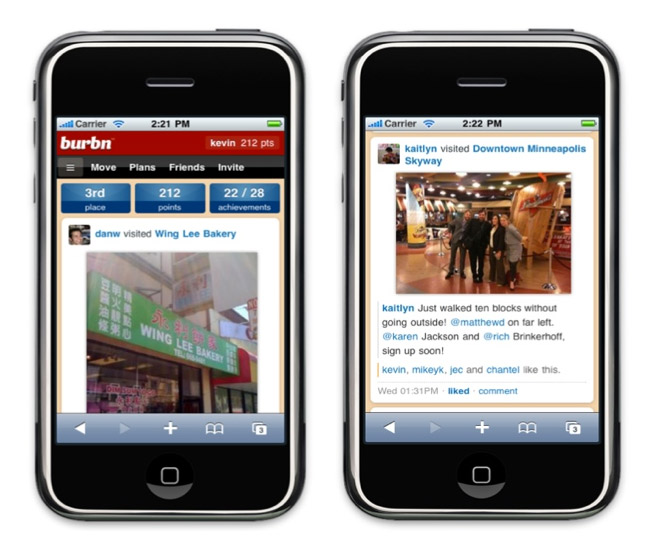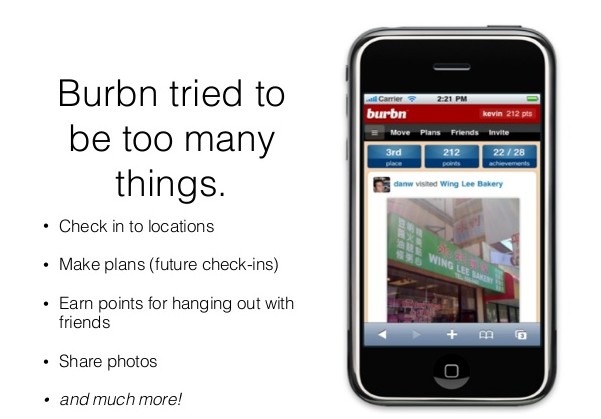
Have you ever heard of Bourbon – wait, no, not that Bourbon, I mean Burbn, the mobile app. If you haven’t, don’t worry, you have plenty of company.
Most people don’t know that Instagram, who sold to Facebook for a billion dollars in 2012, started its life as an app called Burbn, which was basically a knock off of another hugely popular app called FourSquare. So how did Instagram go from a fairly anonymous copycat app in 2010, to become the billion dollar photo sharing app we all know and love, in just two short years? Their secret was the Pivot.

Pivoting is the concept of changing direction on your app’s original intention and evolving it rapidly based on what the users want. Not what you think the users want but what they actually use based on real data. The Pivot was one of Instagram’s biggest secrets on the road to their billion dollar success and it is now the mind set and approach utilised in Silicon Valley by some of world’s most successful apps.
So how do you Pivot? Let’s see what Burbn/Instagram did. Burbn was designed as a check-in app where users could check into different venues and share pictures of the events – but that focus was not getting the app much traction. The founders used analytics to see what was really happening. The founders used actual usage data to discover that the photo sharing feature was the most popular feature; Burbn users loved sharing their photos – but cared far less about any other the other features of the Burbn app. The founders then used this data to make a tough Pivot decision – they decided to cut back all the other features and focus on photo sharing exclusively. They studied all the photosharing apps available and made the newly rebranded, Instagram, the best photo sharing app on the market.

Another great example of a billion dollar Pivot comes from the popular instant messaging app, Whatsapp. Whatsapp originally was a status update app where users would share their status updates with all their contacts. The app didn’t really take off until they discovered their Pivot moment. You see, true ‘app-renuers’ are on a constant look out for their Pivot moment – that moment where they truly understand what their customers need – and for Whatsapp this meant looking at the data and how users were using their app. They noticed a trend. The status messages changed from status updates like ‘I am at the gym’ to messages like ‘how are you?’. They saw what users really wanted was the ability to send or push messages instantly to their contacts so they changed the app to an instant messenger app. We all know about the rapid growth story from there to being sold for $19 billion to Facebook.
So what is the Pivot secret formula?
There are some pretty simple steps:
Develop Your App Idea: your app must be in use with a user base. No app = no Pivot
Analytics: you must track what features are getting used most and then go deeper to understand how they are getting used
Search for your Pivot Moment: you need to be vigilant in looking for new trends or shift in usage of your app so you don’t miss your Pivot Moment when it arrives (keep in mind Pivots can reoccur in different forms so don’t think they only come along once in your app journey)
Strong Management: when your Pivot Moment arrives you need to be able to make the call to shift directions and articulate how you will shift directions based on the data you have acquired.
With the speed at which technology and target markets evolve, app entrepreneurs and marketers need to learn very quickly from the user behaviour and make decisions to take the app in the right direction. So if you have an app or are on your journey to developing the next game changing app, then remember the secret of the Pivot. Make use of mobile analytics tools, understand your users, analyse the data and be open to changing directions quickly – who knows, maybe yours could be the next billion dollar app.

If you’d like to share your app idea with one of our team members and discuss how you could roll out your app idea with this strategy in mind call us today on 1300 781 794
back to the Blog